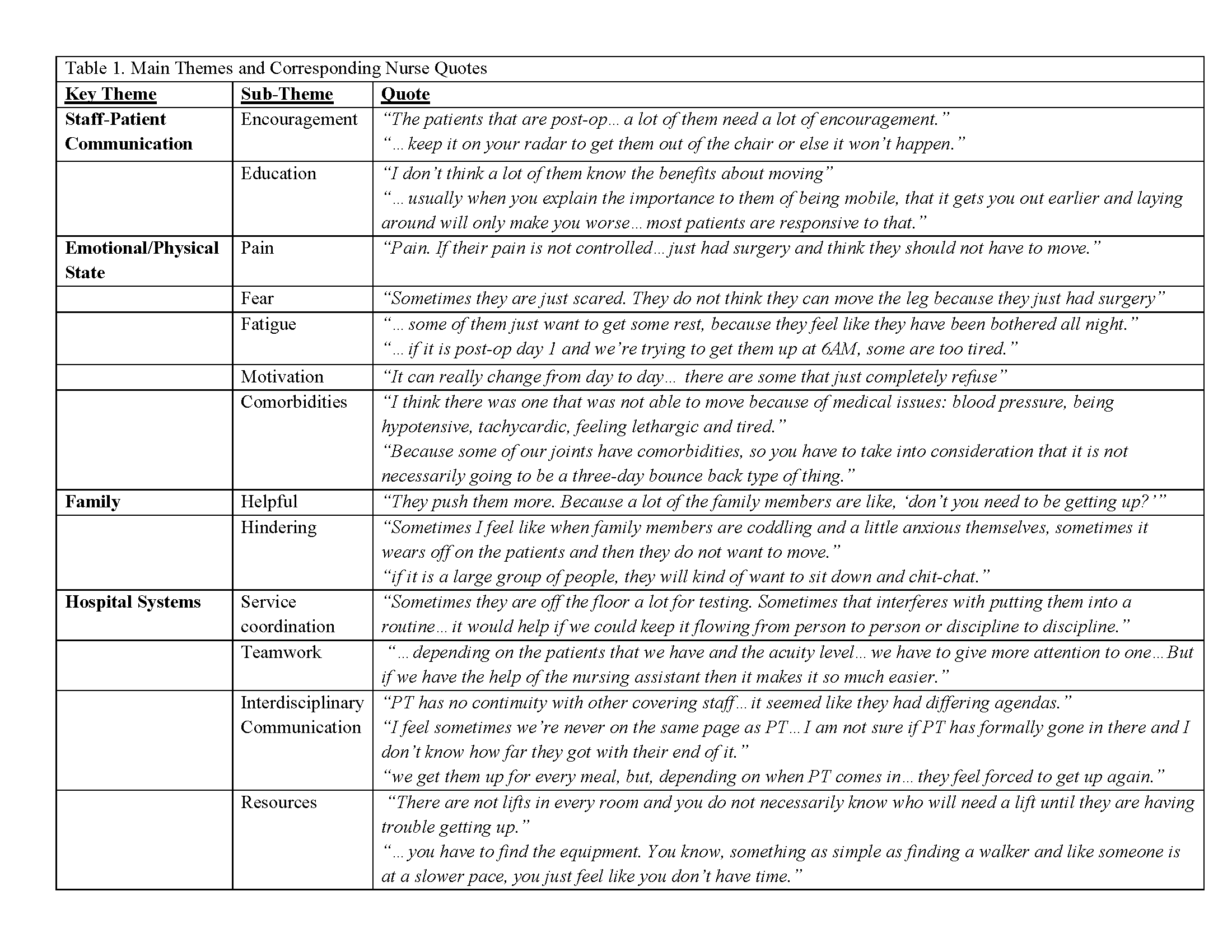Background: Few studies have demonstrated effective hospital mobility programs, despite the overwhelming evidence that hospital mobility leads to better patient outcomes. The objective of this study was to explore factors that contribute to whether or not patients move their recommended amounts while in the hospital.
Methods: A convenience sample of 6 acute care nurses completed a semi-structured, in-person interview. An interview guide was used to explore: patient adherence to recommended amount of ambulation, barriers to mobility, family member influence, and suggestions for how mobility can be increased. Thematic analysis was used to analyze interview transcripts.
Results: All of the participants were female and registered nurses, three were from a cardiac floor and three were from an orthopedic surgery floor. Four main themes were identified: (1) Staff-Patient Communication, (2) Patient Emotional/Physical State, (3) Family, and (4) Hospital Systems. Staff-Patient Communication included: encouragement and education. Patient Emotional/Physical State included: pain, fear, fatigue, motivation, and comorbidities. Family included: helpful and hindering instances. Hospital Systems included: service coordination, teamwork, interdisciplinary communication, and resources (scheduling, equipment). There were many factors that contributed to whether or not a patient met his or not mobility goals, some within and without the patient’s control. Study participant quotes illustrated how nurses perceived different factors as being barriers or facilitators in mobilizing patients.
Conclusions: In this study, nurses described different influences on patients’ mobility. Staff-patient communication, teamwork, and occasionally family members can help a patient meet mobility goals. However, the emotional or physical state of a patient, lack of service coordination and interdisciplinary communication, resources, as well as anxious family members were identified as barriers to patient mobility. Next steps include further investigating patient perspectives on different barriers and motivators for mobility.

